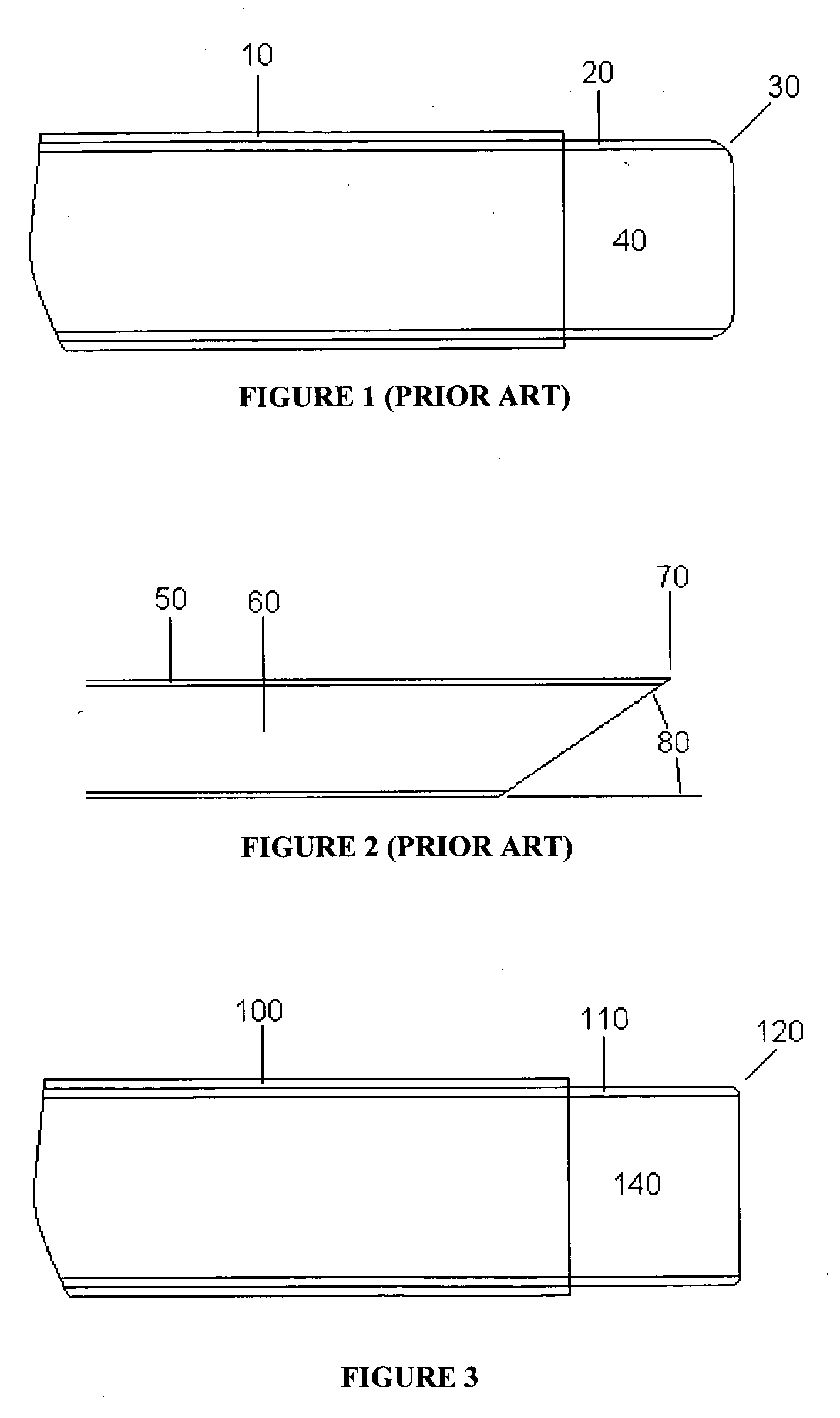High energy fiber terminations and methods
- Summary
- Abstract
- Description
- Claims
- Application Information
AI Technical Summary
Benefits of technology
Problems solved by technology
Method used
Image
Examples
Embodiment Construction
[0037] In prior art methods of laser processing bare fiber tips, the heat applied to the fiber—of sufficient concentration to produce the bulk vaporization and surface melt effects—conducts to the fiber edges where excessive rounding results. FIG. 1 illustrates the best case resulting from use of a CO2 laser to flat-polish a low CCDR fiber, where 10 is the fiber buffer coating (polymer), 20 is the doped glass cladding and 30 is edge rounding that distorts the silica core 40. In the simplest variation of the current art, illustrated in FIG. 5, the opening of a small vacuum tube 210 connected to a vacuum motor is positioned just below the focal point of the laser 240 on a fiber 200 with the fiber 200 centered in the vacuum tube opening in rotation. For flat polished surfaces, and concave, fiber 200 is located within collet 205 and is rotated at an angle 215 that is approximately the same as the focal angle 225 of the laser. The flow of air around the fiber 200 serves to cool the disto...
PUM
| Property | Measurement | Unit |
|---|---|---|
| Angle | aaaaa | aaaaa |
| Energy density | aaaaa | aaaaa |
| Symmetric field theory | aaaaa | aaaaa |
Abstract
Description
Claims
Application Information
 Login to View More
Login to View More - R&D
- Intellectual Property
- Life Sciences
- Materials
- Tech Scout
- Unparalleled Data Quality
- Higher Quality Content
- 60% Fewer Hallucinations
Browse by: Latest US Patents, China's latest patents, Technical Efficacy Thesaurus, Application Domain, Technology Topic, Popular Technical Reports.
© 2025 PatSnap. All rights reserved.Legal|Privacy policy|Modern Slavery Act Transparency Statement|Sitemap|About US| Contact US: help@patsnap.com



